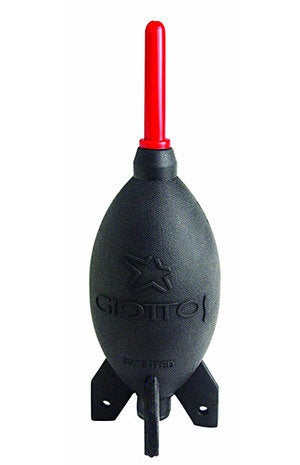Everything gets dusty, dirty, and smudgy. You know that, for instance, because you have a phone. Most of the time, your phone’s screen looks like it sunk with the Titanic. If you have a digital camera—either a compact camera or a digital SLR—it’s even worse, because the optics are delicate and it doesn’t take much gunk to adversely affect your photos.
The good news is that it doesn’t take a lot to keep your camera clean and in top form. Depending upon the kind of camera you have, there are at most a handful of parts that you’ll want to keep clean. The lens should always be free of gunk, of course. If you have a camera with removable lenses, you’ll also want to care for the rear lens element, the connections, and sensor. Here’s what you need to know—and the tools you need to do it.
Cleaning the lens
There are a lot of cleaning kits, cleaning cloths, fluids, and gadgets to choose from when it comes to cleaning your camera lens.
All you really need to keep your lens clean is a package of inexpensive lens cleaning tissue and some lens cleaning fluid. For the most part, these are pretty much all the same; you can find perfectly serviceable cleaning tissue on Amazon, for example, for pennies per sheet. A 50-pack of Tiffen paper is $6.35. Just be sure that you’re using lens cleaning paper, and not general purpose tissue that’s treated with moisturizer or that will leave behind fluff. You’ll also want a small bottle of lens cleaning solution, like Zeiss lens spray, which costs under $10. You don’t need a lot; a small bottle lasts a long time.

I also suggest getting an air blaster. Never use cans of compressed air around your camera—you can damage your gear if you accidentally squirt the propellant on your camera. Instead, try a gadget like the Giottos AA1900 Rocket Air Blaster for $7.75, which blasts bursts of air when you squeeze the rubber body.
To clean your lens, start by blowing the lens with your blaster to remove large particles that could scratch the lens during the next stage of cleaning.
Then apply a drop or two of the cleaning fluid to the paper—never directly to the lens itself—and clean the lens in a gentle, circular motion.
Another option: I love the Lenspen. This pen-like gadget has a brush at one end and a felt-like pad treated with a cleaning solution on the other, perfect for wiping away dust and cleaning smudges off the lens.
You might hear advice to clean your lens with a microfiber cloth, like the kind that you get with eyeglasses. Unfortunately, microfiber cloth can leave behind a stubborn lint residue that is just about as bad as the dust you had to begin with. My advice? Never use it on the lens.
But that doesn’t mean there’s no reason to have a microfiber cloth. If you have a camera with removable lenses, use the cloth to clean your lens cap—especially the inside, where it connects to the lens barrel—and clean your camera’s body cap as well. You should also use the cloth (with a drop or two of cleaning fluid) to clean the metal rings that connect the lens to the camera body, along with the electronic contacts that let the camera communicate with the lens.

Cleaning the mirror
Don’t clean your mirror. The mirror in a digital SLR has no effect on your photo quality. It only affects what you see in the viewfinder, because when you press the shutter release, the mirror flips out of the way to reveal the sensor. And touching the mirror with anything—paper, tissue, Q-tip, angel wings—can damage it.
If you really want to, you can safely shake dust loose from the mirror using an air blaster like the Giottos. Hold the camera upside down and, with the lens removed, blast air up, towards the mirror.
Cleaning the sensor
Unlike the mirror, the sensor in a DSLR might occasionally need to be cleaned. If you see spots on your photos and have already cleaned the lens, odds are that there’s some grime on the sensor. (Of course, if you don’t see spots on your photos, don’t feel compelled to clean the sensor. Your photos won’t be improved by preventative maintenance.)
Your first line of defense should be your camera’s self-cleaning mode. Look in the menu system or user guide for instructions on how to activate that, which will vibrate the sensor to shake dust loose.
If you still have dust on the sensor, you can get the camera professionally serviced or try it yourself. Get a sensor cleaning kit like the Delkin SensorScope Cleaning System, a $100 kit that includes sensor wipes, cleaning fluid, as well as a small vacuum and a scope for seeing dust on the sensor.
Or just get the swabs and cleaning fluid. Excellent choices include Visible Dust and DustAid Dust Wand Kit.

Approach any sensor cleaning with care, but it’s honestly not all that difficult. You need to begin by locking the mirror up to expose the sensor—your camera’s user guide explains how to do this—and then use a blower to clear any lose dust, while holding the camera upside down. Review the instructions that came with your sensor swab to gently wipe away any residual dust.